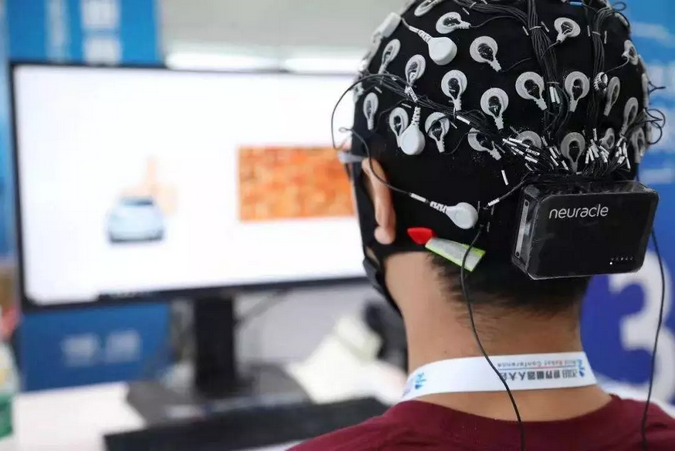By Anatole Tahintzi, Year 12
Brain-Computer Interfaces (BCIs) are devices that can facilitate direct communication between the brain and electronic devices. BCIs are being explored for various purposes, including medical applications such as restoring movement to paralyzed patients, treating psychiatric disorders, and improving cognitive function in patients with neurological conditions.
BCIs work by detecting electrical signals produced by the brain and translating them into actions that can be performed by a computer or other device. Sometimes researchers attach electrodes from a BCI to a person’s scalp, and in other cases, doctors put an implant into a person’s brain. Based on the action desired, researchers target different brainwaves. The device then reads and interprets the brain signals and translates that data into commands.
One of the most promising applications of BCIs is in restoring movement to patients with paralysis. BCIs can bypass damaged nerve pathways by translating brain signals directly into actions such as moving a prosthetic limb or a computer cursor. This technology has already shown promising results in animal studies and human trials, with some patients able to control prosthetic limbs to a high degree of accuracy. Researchers from the University of Pittsburgh’s Rehabilitation and Neural Engineering Laboratory (RNEL) have demonstrated that a study participant could use a portable version of the BCI system at home to move a mouse cursor, play computer games, and type out sentences. Pitt has been a leader in BCI research, successfully enabling a paralyzed man to operate a robotic arm and hand that provides tactile feedback directly to the man’s brain. Elsewhere, a clinical research paper led by Stanford University has demonstrated that a brain-to-computer linkup can enable people with paralysis to type via direct brain control at the highest speeds and accuracy levels reported to date.
Researchers are exploring the use of BCIs for a variety of other medical problems as well. For instance, BCIs may let someone speak who can’t otherwise do so. BCIs could help people with severe disabilities interact with their environment, communicate, and enhance independence. BCIs have also been used to restore sensation in body parts that could not move and to help people operate wheelchairs.
In conclusion, BCIs have the potential to greatly improve the lives of individuals with neurological disorders, particularly those who have lost the ability to control their movements due to conditions such as spinal cord injuries, stroke, or muscular dystrophy. These devices can restore mobility and independence, as well as enhance communication and cognitive function. With ongoing research and development, BCIs may continue to revolutionise the field of medicine and provide new hope for patients with debilitating conditions.



